Lieutenant Colonel Charles Benjamin Leinbach
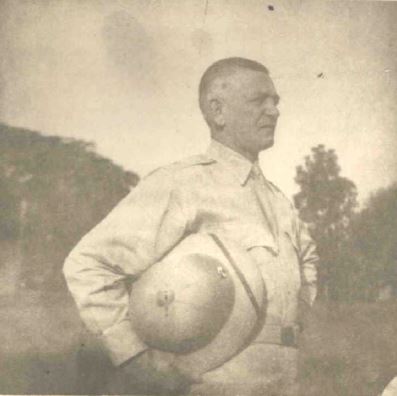
- Unit: 1st Battalion, 24th Field Artillery Regiment (Philippine Scouts)
- Service Number: O-11578
- Date of Birth: February 8, 1892
- Entered the Military: November 6, 1914
- Date of Death: January 9, 1945
- Hometown: Douglassville, Pennsylvania
- Place of Death: Takao, Formosa
- Award(s): Silver Star; Purple Heart
- Cemetery: Section OS, Row 82, Site 12. San Francisco National Cemetery, San Francisco, California
Carlisle Area High School
2016-2017
Early Life
Charles Leinbach grew up as one of eight children in a German immigrant family in Pottstown, Pennsylvania. His father, Daniel, was an established farmer in the community, while his mother, Ada, stayed at home to take care of their eight children: Larus, Lotta, Owen, Guy, Reider, Charles, Myrtle, and Lee.
Leinbach’s family was strongly rooted in the community. Daniel held various positions within the Friedens United Church of Christ in Oley, Pennsylvania.
Charles only completed eighth grade at Pottstown Area School District. With such a demand from a large family, at age 12, he began working for his father on the family farm.
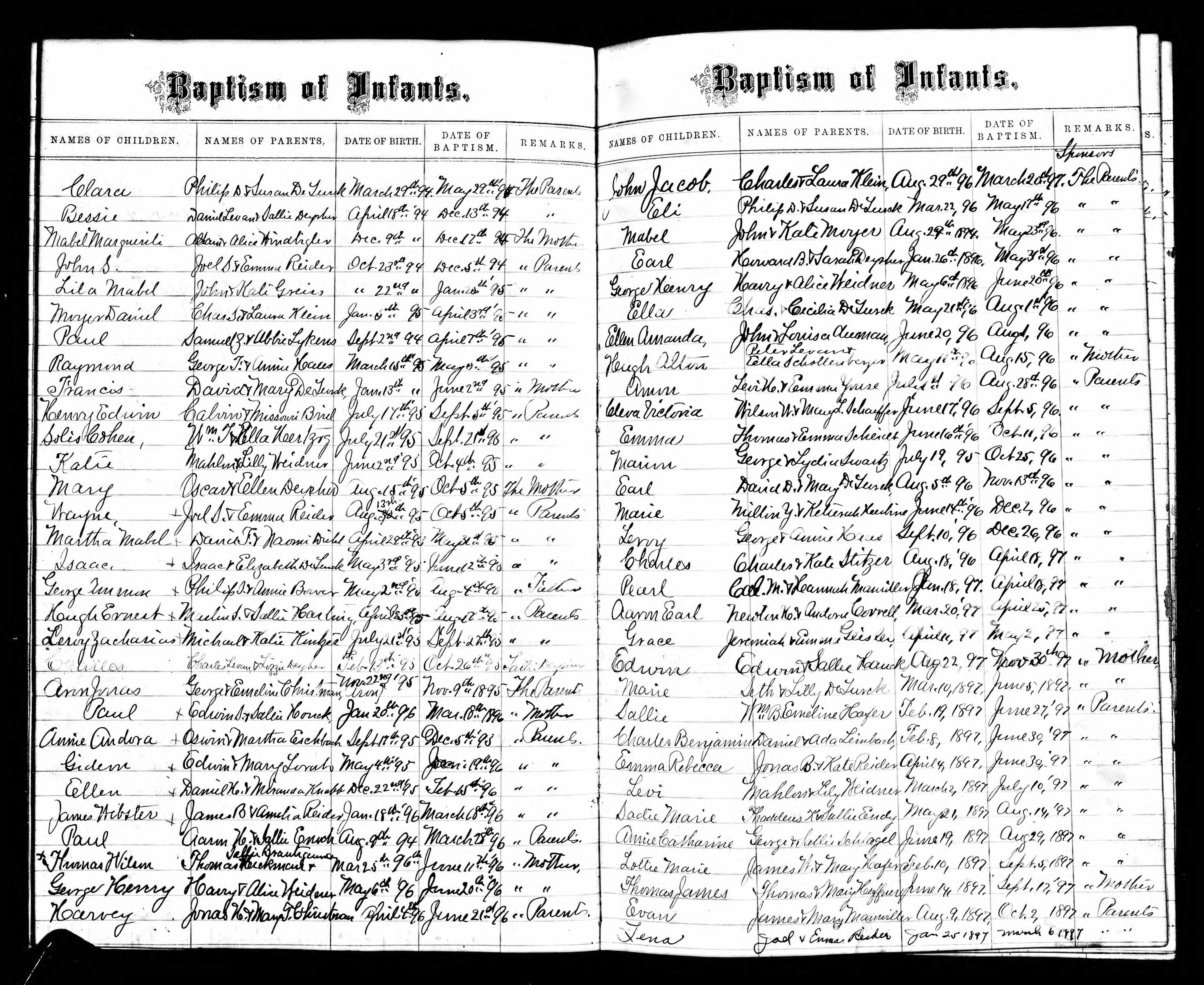
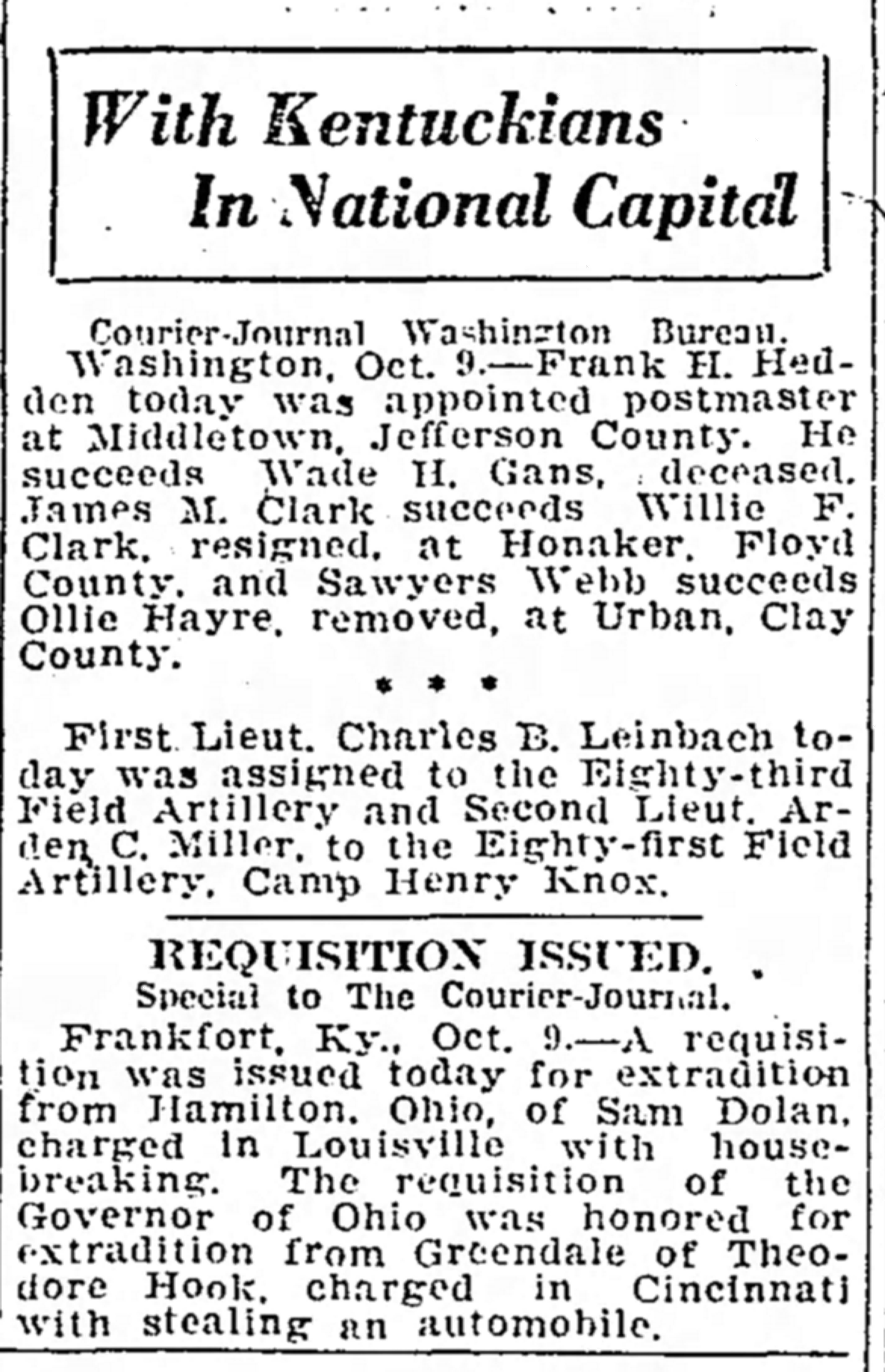
Military Experience
War World I Breaks Out in Europe
With the outbreak of the Great War in 1914, Charles saw an opportunity to leave the family farm. He enlisted as a private in the U.S. Army on November 6, 1914, in Philadelphia, Pennsylvania, just three months after the outbreak of war. Leinbach lied about his age to enlist. He listed 1892 as his birth year to make himself 22 years old, when in fact he was born in 1897 and was only 17 years old.
Leinbach spent basic training at Fort Slocum, New York. After completion, he transferred to Battery D1 Field Artillery due to his excellent work in mathematics. Leinbach served stateside in this capacity from January 1915 to May 1918. He attended Officer Training School at Camp McArthur, Texas, completing his training just as World War I came to a close.
The Inter-War Years
Rather than return to farm life, Leinbach decided to pursue a military career. During time in Oklahoma, Leinbach fell in love with a 16-year-old named Pearl Oleatha Jackson and married her on April 20, 1918. Within a year, their only daughter, Lorraine Jackson, was born.
The family moved around the country to include Kentucky, where he attended Field Artillery Central Officers Training School at Camp Taylor, Kentucky. Following this training, Leinbach moved through the ranks quickly, and by 1938 earned the rank of captain as part of the 76th Field Artillery, 2nd Battalion, D Battery at the Presidio of Monterey in California.
As tensions mounted in the Pacific, Leinbach, along with his wife and daughter, transferred to Fort Stotsenburg in the Philippines in January 1940. Leinbach advanced to major on July 1, 1940, and led the 1st Battalion, 24th Field Artillery Regiment (Philippine Scouts). Leinbach’s wife and daughter left the islands in June 1941 as the region became more volatile. Leinbach earned a promotion to lieutenant colonel on September 15, 1941, less than three months before the bombing of Pearl Harbor on December 7.
Battle of the Philippines
Leinbach’s battalion learned of the attack on Pearl Harbor on December 8, 1941, at 6 a.m. local time. Over the next two days, personnel commandeered vehicles and prepared supplies and artillery. On December 10, the 1st Battalion was attached to the 31st Infantry and moved to defensive positions on the Bataan Peninsula on the east and west roads near Abucay. On December 14, the units moved to support the beach defense on the western side of Bataan.
After Japanese forces advanced further into Bataan, the first defensive line was established from Abucay in the east to Mauban in the west. General George Parker, commanding the II Corps in the east, assigned the well-trained 57th Infantry Regiment to anchor his right flank. The 1st Battalion, 24th Field Artillery, under the leadership of Leinbach, was in direct support of the 57th Infantry Regiment.
Colonel John E. Olsen stated that Leinbach “located his command post and fire direction center almost due south of the regiment in Abucay, but in that portion of the barrio that lay on the other side of the river. Four large guns were put under the cover of the large mango trees along the northern edge of Mabatang.” From these positions, they could deliver long-range fire on the village and the road north of the village.
On January 6, the 1st Battalion of the 57th Infantry Regiment was ordered back to Abucay. Japanese Colonel Takeo Imai began his assault on the line, and, despite heavy casualties, his troops pushed the U.S. forces back. They emerged at night in banzai attacks preceded by artillery and mortar barrage. For a time, the 1st Battalion of the 24th Field Artillery Regiment was firing point-blank at the enemy.
During this engagement at Abucay, on or about January 16, 1942, Leinbach earned a citation for the Silver Star. The citation reads,
He was at the Command Post, 57th Infantry (PS), about 1 o’clock in the afternoon. Suddenly an enemy battery began shelling the Command Post which was located in an old stone church. Without regard for his personal safety, he climbed the church steeple and acted as observer, bringing his battalion fire on the enemy battery. One shell scored a hit on the church. He continued his observation until the enemy battery was silenced.
Leinbach survived the attack.
Nevertheless, the Japanese continued to attack and pushed U.S. forces back. Some U.S. troops escaped to Corregidor Island just before the surrender of Bataan on April 9, 1942.
From Soldier to Prisoner of War
Colonel George S. Clark reported to Leinbach’s wife he had seen him in the Philippines in January 1942 but believed he had been captured. Clark wrote, “I cannot think of words to describe the wonderful service that your husband rendered during the Bataan show. If any man distinguished himself it was Charles.”
Leinbach’s brother, Reider, received a telegram from the U.S. Army stating that Leinbach was now perhaps a prisoner of war. Between April and June, 1942 Leinbach was listed as “missing in action.” On May 7, 1942, the Japanese government issued a report to the International Red Cross confirming that Leinbach was a prisoner of war.
The last letter that Leinbach’s wife Pearl would receive from him was dated November 1943.
Leinbach became a prisoner of war at Camp #1 in Cabanatuan, Nueva Province, Luzon, Philippines. Cabanatuan housed over 3,200 American POWs during World War II. Leinbach served as the Vice Camp Commander while at Camp #1. He lived as a prisoner of war for over 975 days.
From Prisoner to Hell
As Allied advances continued toward Japan, many prisoners of war were transferred to Bilibid, a former civilian prison converted to a POW transit point for movement on to hell ships bound for Japan. On December 13, 1944, Leinbach, along with more than 1,600 other men, was loaded into the forward hold of the Oryoku Maru and departed Pier #7 in Manila for a POW camp in Jinsen, Korea. During the trip, the Japanese gave the men little water and inadequate latrines. The temperature inside the ship’s hull rose to 120 degrees.
The Oryoku Maru was bombed by U.S. planes on December 14, 1944, because it included no markings that the shipped contained POWs. With darkness falling, the attack was called off; however, the bombers returned the next morning. The crippled Oryoku Maru made its way to Subic Bay and unloaded the prisoners before sinking.
Leinbach was loaded onto the Enoura Maru on December 27, 1944, and reached Takao, Formosa, by the new year. While docked, the ship was bombed by American planes on January 9, 1945. Of the original men who boarded the Oryoku Maru, more than 80 percent of them died. Some of the dead from the Enoura Maru were buried in a mass grave on Formosa (now Taiwan), including Leinbach. His death was confirmed by the International Commission of the Red Cross.
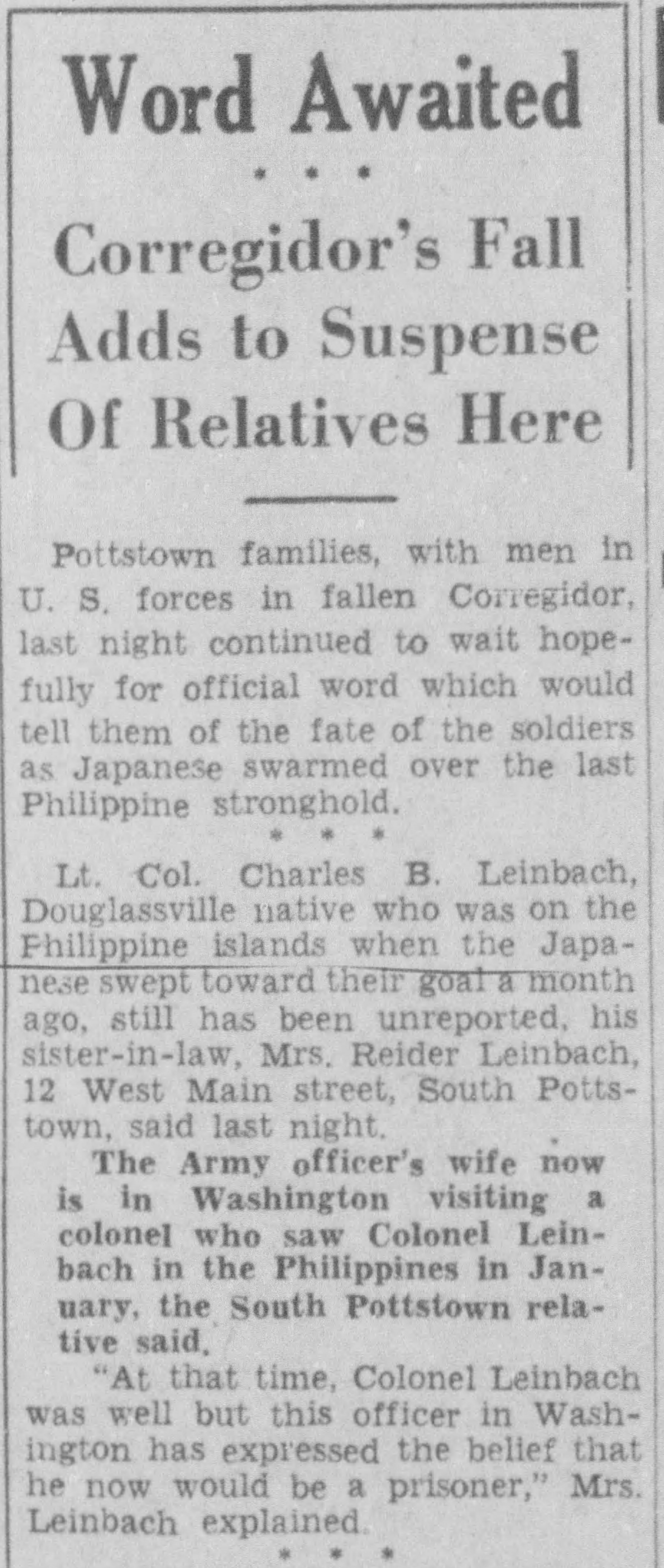
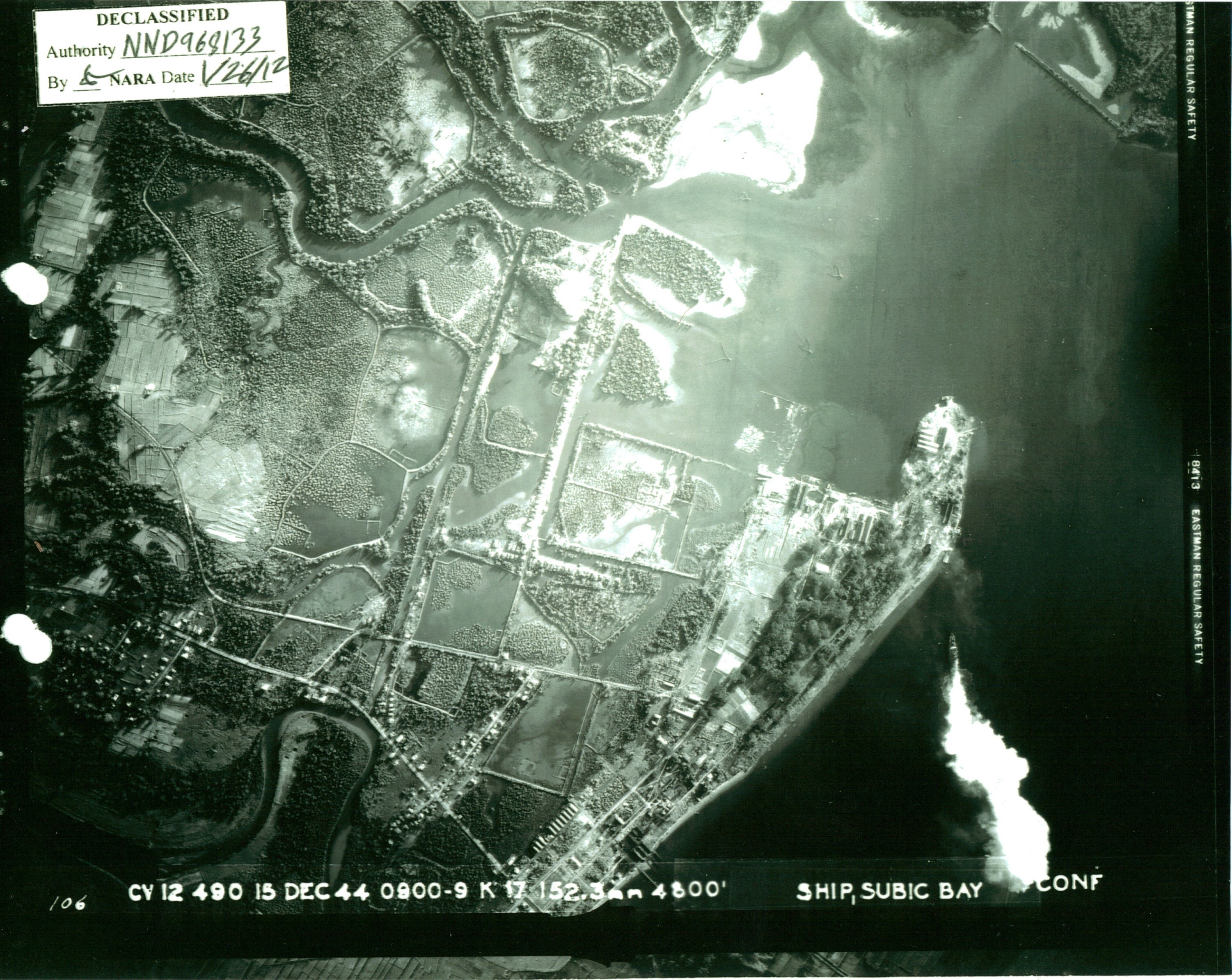
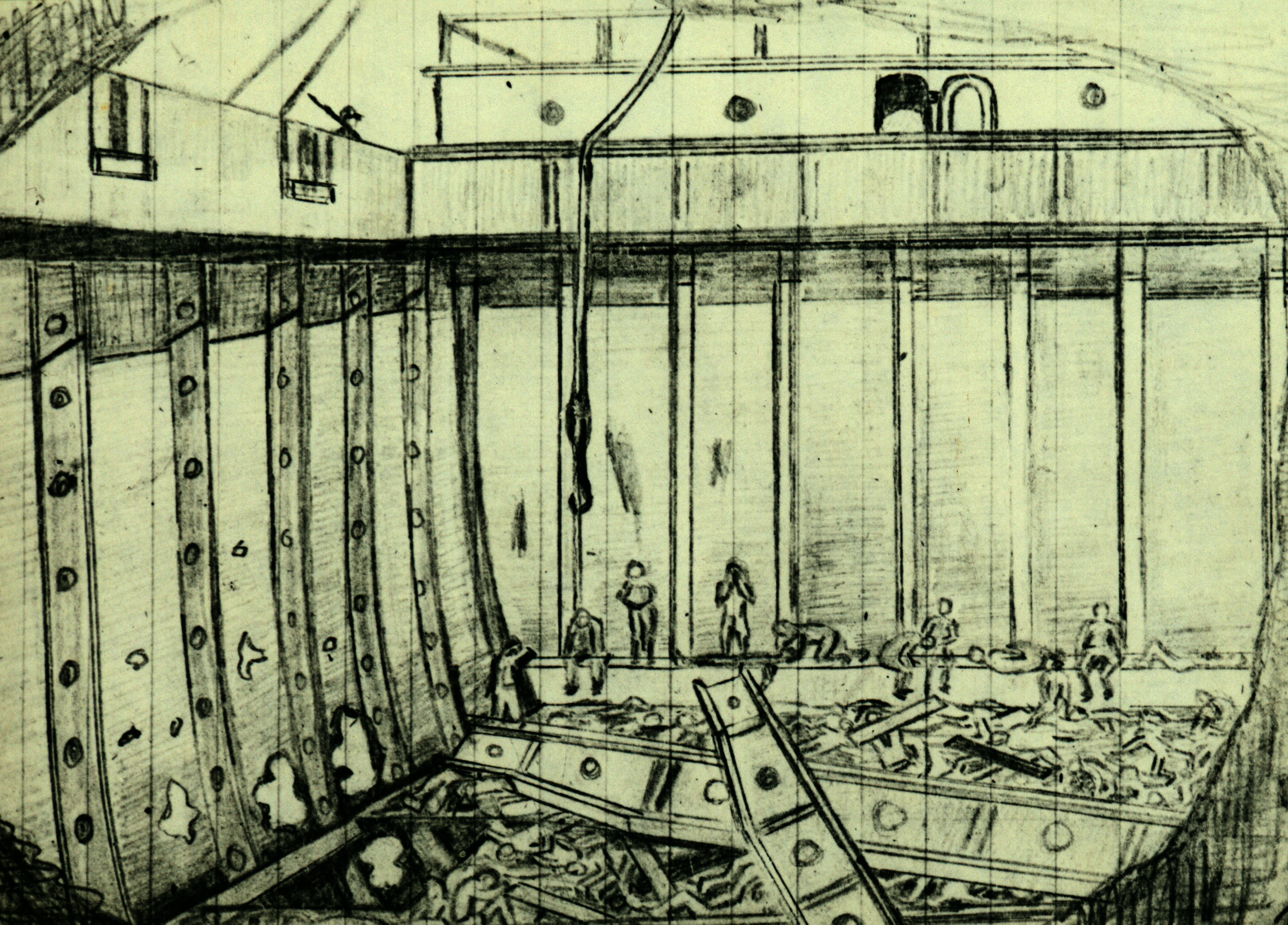
Eulogy
The Graves Registration Service discovered Leinbach’s body in a mass grave in spring 1946, “located along the beach near the Formosan cemetery about one kilometer toward Kigo from Hamauri tea room, Nakasu Beach.”
Leinbach’s remains were sent to the American mausoleum in Shanghai, China, and eventually to Honolulu, Hawaiʻi, where the identification was made. Leinbach’s wife, Pearl, wrote over 50 letters to the Memorial Division of the U.S. Army, providing physical and photographic details to aid in finding and identifying her husband. This was further aided by three other individuals: Lieutenant Colonel Alva R. Fitch and Colonel John Duffy, who survived the Enoura Maru, and Colonel Everett Busch, an old friend who was now serving in the Memorial Division of the U.S. Army.
Leinbach’s body was returned to the mainland United States on August 26, 1948, onboard the U.S. Army Transport Morris E. Crain. Leinbach’s final internment at San Francisco’s National Cemetery occurred on September 30, 1948, with funeral services held at the Post Chapel on the Presidio.
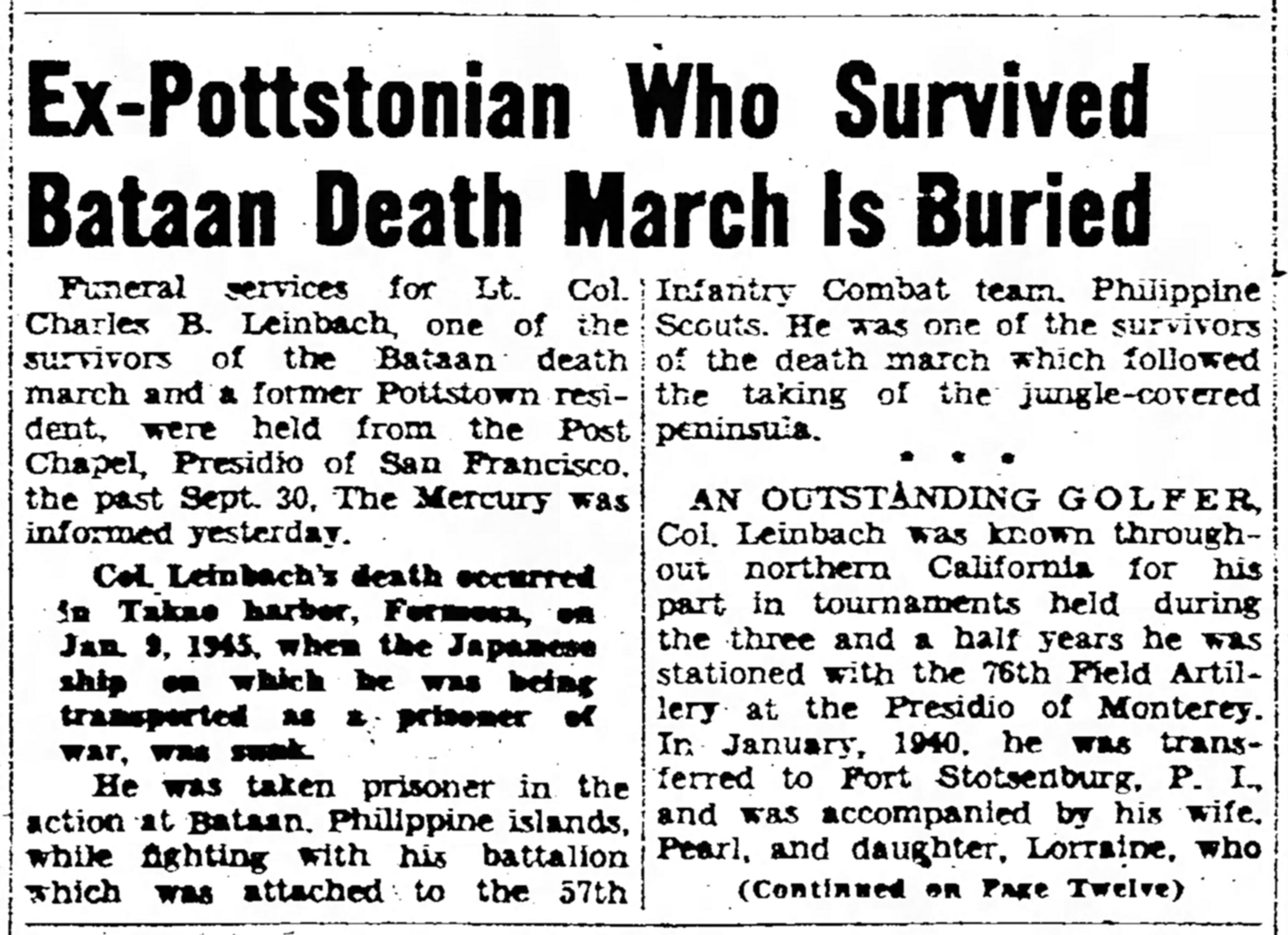
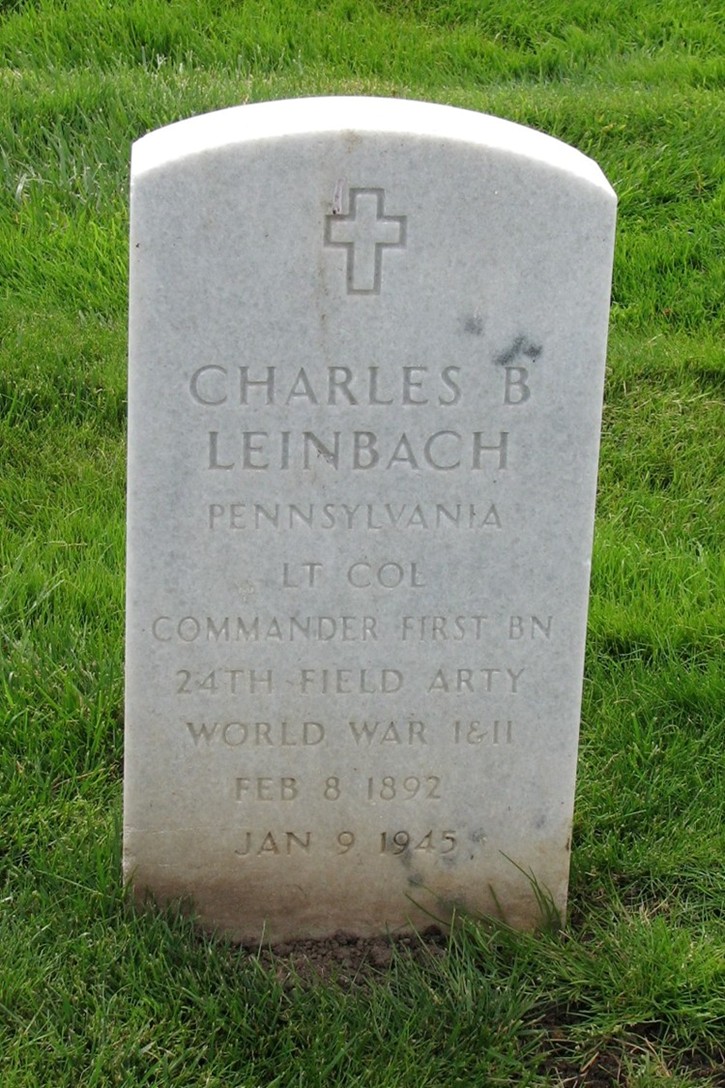
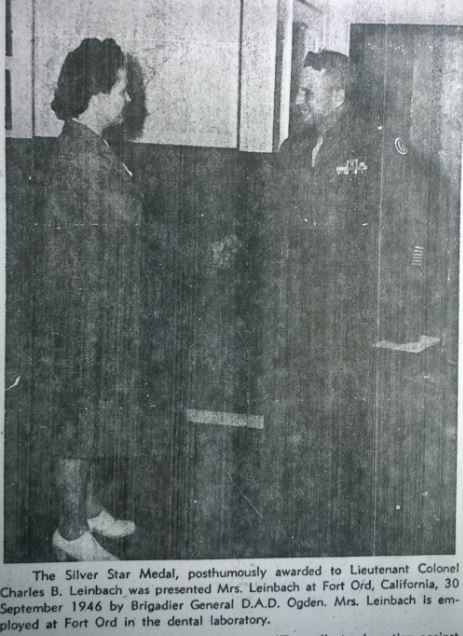
Reflection
Bibliography
“Another Pottstown Lad.” Pottstown Mercury, October 21, 1944. www.newspapers.com/images/86837546.
Brown, Lt.Col. AUS Ret. Charles M., et al. “The Oryoku Maru Story.” Last modified 1983. Accessed December 23, 2016. www.oryokumaruonline.org/oryoku_maru_story.html.
Brunn, Tucker. “The Oryoko Maru Online.” Oryoko Maru Online. Last modified 2001. Accessed December 23, 2016. www.oryokumaruonline.org/index2.html.
Burnett, Jim. “Camp Cabanatuan.” Japanese WWII POW Camp. Last modified June 18, 2016. Accessed December 23, 2016. www.lindavdahl.com/index.html.
Camp Knox, Kentucky, 1931. Photograph. 1931. Herald Post Collection, University of Louisville Photograph Archives. digital.library.louisville.edu/cdm/singleitem/collection/heraldpost/id/287/rec/18.
Capitulo, Alejandro P., “The Death March,” Projects of the Enemy Regime, Record Group 319 (Box 13), National Archives at College Park, College Park, MD.
Charles Leinbach, Individual Deceased Personnel File, Department of the Army.
Charles Leinbach, Official Military Personnel File, Department of the Army, RG 319, National Archives and Records Administration – St. Louis.
Charles Leinbach Baptismal Record, June 30, 1897. Oley United Church of Christ. ancestry.com.
“Col. Charles Leinbach is Prisoner of Japs.” Pottstown Mercury, December 15, 1942. www.newspapers.com/images/49919980.
“Defenders of the Philippines.” The American Defenders of Bataan and Corregidor. Brooke County Public Library, West Virginia. Accessed December 18, 2016. philippinedefenders.lib.wv.us/index.html.
“Ex-Pottstonian Who Survived Bataan Death March is Buried.” Pottstown Mercury, October 7, 1948. www.newspapers.com/images/1593003.
“Fort Knox History: Camp Knox 1918-1931.” Pamphlet, Fort Knox Cultural Resources Office Environmental Management Division, Fort Knox, KY, 2008.
“Field Artillery.” Army and Navy Register, 1922, 71(2164): 526.
“Scribe Unheard from in Bataan.” Gettysburg Times, April 11, 1942. www.newspapers.com/image/119079389/.
Gladwin, Lee A. “American POWs on Japanese Ships Take a Voyage into Hell.” Prologue Magazine, Winter 2003, 35(4), www.archives.gov/publications/prologue/2003/winter/hell-ships-1.html.
Illegal Acts by Japanese in Philippines, 1945-47; Supreme Commander for the Allied Powers, Legal Section, Manila Branch, Allied Operational & Occupation Headquarters, World War II, Record Group 331 (Box 1994); National Archives at College Park, College Park, MD.
Illegal Acts by Japanese in Philippines, 1945-48; Supreme Commander for the Allied Powers, Legal Section, Manila Branch, Allied Operational & Occupation Headquarters, World War II, Record Group 331 (Box 2007); National Archives at College Park, College Park, MD.
Interment Control Forms, 1928–1962. Interment Control Forms, A1 2110-B. Records of the Office of the Quartermaster General, 1774–1985, Record Group 92. The National Archives at College Park, College Park, Maryland.
Lawton, Manny. Some Survived: An Eyewitness Account of the Bataan Death March and the Men Who Lived Through It. New York: Algonquin Books. 2004.
Michno, Gregory F. Death on the Hellships: Prisoners at Sea in the Pacific War. Annapolis: U.S. Naval Institute Press, 2001.
“Never Forgotten: The Story of the Taiwan POW Camps and the Men Who Were Interned in Them.” Taiwan POW Camps Memorial Society. Last modified 2016. Accessed December 23, 2016. www.powtaiwan.org/index.php.
Oklahoma. County Marriages, 1980-1994. ancestry.com.
Olson, John E., Ed. The Philippine Scouts. San Antonio: Philippine Scouts Heritage Society, 1996.
Records for Charles B. Leinbach; World War II Army Enlistment Records, 1938-1946 [Electronic File], Record Group 389; National Archives at College Park, College Park, MD [retrieved from the Access to Archival Databases at aad.archives.gov/aad/fielded-search.jsp?dt=466, December 23, 2016.
Records for Charles B. Leinbach; World War II Army Prisoners of War Data File, 1941-1946 [Electronic File], Record Group 389; National Archives at College Park, College Park, MD [retrieved from the Access to Archival Databases at aad.archives.gov/aad/fielded-search.jsp?dt=466, December 23, 2016.
“Regimental Notes.” The Field Artillery Journal, 1927, 17(2): 172.
“Stations of Field Artillery Officers.” The Field Artillery Journal, 1940, 30(6): 499.
“Trinity Reformed Members and Friends Hold Armistice Service for War Dead.” Pottstown Mercury, November 12, 1945. www.newspapers.com/images/50711021.
“Triumph in the Philippines,” Projects of the Enemy Regime, Record Group 319 (Box 13), National Archives at College Park, College Park, MD.
United States Military Registers, U.S. Army, 1921. ancestry.com.
United States Military Registers, U.S. Army, 1926. ancestry.com.
United States Military Registers, U.S. Army, 1942. ancestry.com.
“With Kentuckians in National Capital.” Courier-Journal, October 10, 1920. www.newspapers.com/image/119079389/.
“Word Awaited.” Pottstown Mercury, May 7, 1942. www.newspapers.com/images/48962438.
World War I Veterans Service and Compensation File, 1934–1948. RG 19, Series 19.91. Pennsylvania Historical and Museum Commission, Harrisburg, PA.
This profile was researched and created with the Understanding Sacrifice program, sponsored by the American Battle Monuments Commission.

